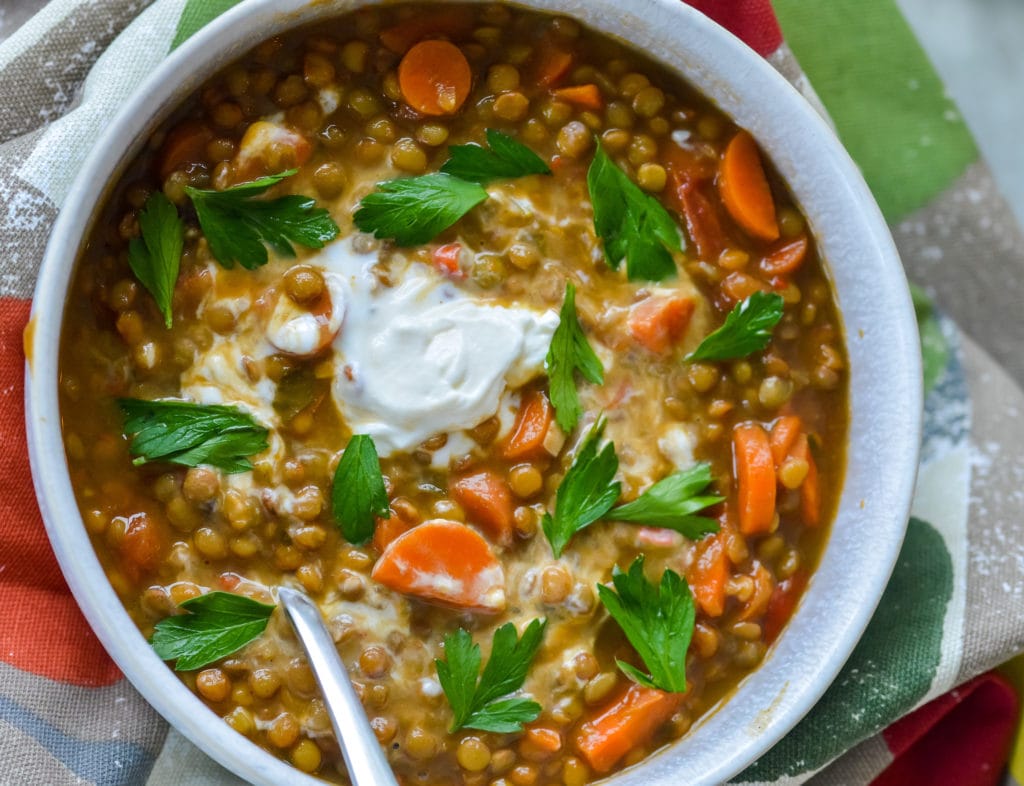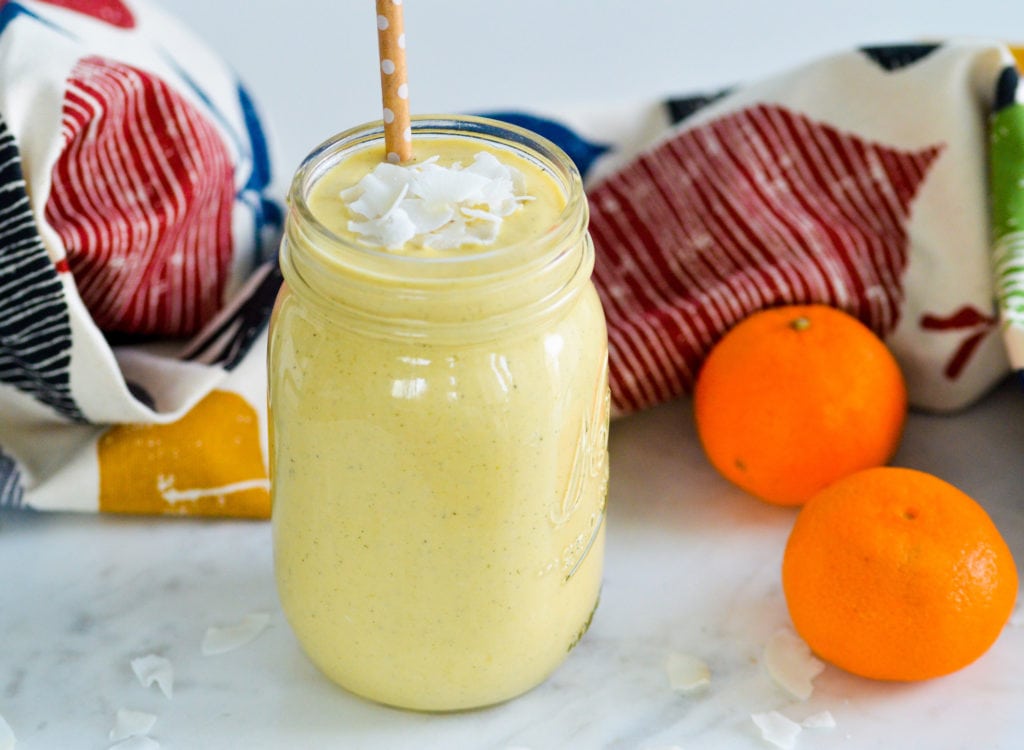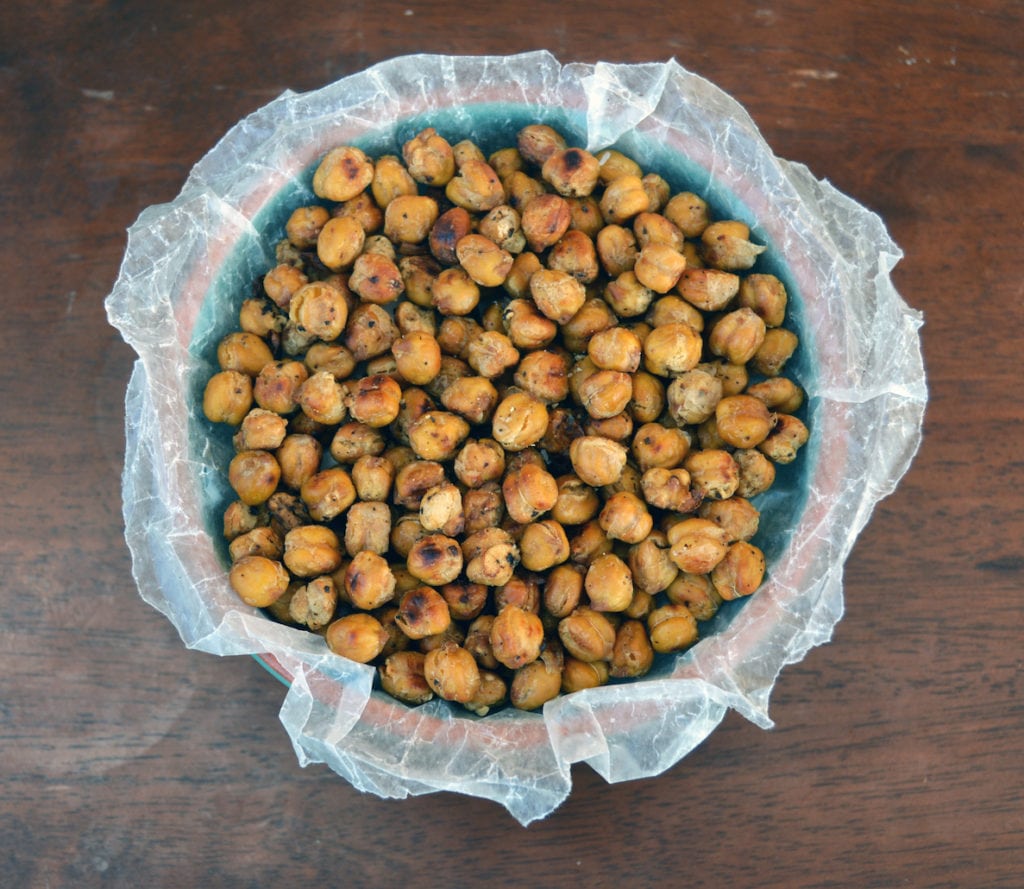Last updated on June 2nd, 2023 at 01:15 pm
You don’t need to eat meat to build muscle and get strong. Follow these 9 simple suggestions to increase your muscle protein synthesis and build lean body mass on a vegetarian diet.
It’s a common misconception that it is difficult to build muscle on a vegetarian diet. After all, a chicken breast or steak provides much more protein per ounce than beans or whole grains. But building muscle as a vegetarian is absolutely doable.
Vegetarians need to pay attention to a few important key aspects of the diet in order to build muscle. This article will help any vegetarian create a plan to build muscle and become the strongest version of themselves.
What does muscle do?
Before we discuss the how, you might be wondering why you should care about building muscle. As a runner, I made the crucial mistake of ignoring strength training and focusing on just logging mileage.
While that builds muscle in the legs, it doesn’t create strength throughout the entire body. Increasing your lean muscle mass is a worthwhile goal for several reasons, such as:
- Muscle burns more calories than fat, so increases in lean body mass can speed up your metabolism.
- More muscle mass means you will have a lower overall body fat percentage.
- Strength training helps you build stronger bones AND muscles.
- More muscles can make it easier to perform daily activities, such as carrying multiple grocery bags or opening a stubborn jar of pickles.
Why is protein important?
Protein is the building block for muscle, and eating it is essential for increasing muscle. When you exercise, your muscles go through a breakdown process. Eating enough protein is necessary to help repair and build the muscle.
Join the FREE 5-Days Of Fueling Challenge to learn more about recovery nutrition and muscle building!
As a vegetarian, the sources of protein in your diet will differ from the average person consuming meat. Plant-based proteins include beans, lentils, whole grains (like quinoa, brown rice and farro), nuts, seeds, soy products, and dairy. Plant-based protein powders can also be a source of protein for the busy athlete but are certainly not necessary to meet protein needs as a vegetarian.
Can vegetarians build muscle?
Of course! You can get plenty of protein on a vegetarian diet to stimulate muscle growth. Although the protein sources differ between meat-eaters and vegetarians, most other recommendations for building lean body mass are the same for both groups.
Follow these 9 tips to create a diet plan that helps gain muscle on a vegetarian diet:
1. Figure out your protein needs
Protein is a hot topic right now, but the daily requirement is actually much less than you may think. The Recommended Dietary Allowance (RDA) for protein is a modest 0.8 grams of protein per kilogram of body weight or 0.36 grams per pound – the best way to calculate the minimum amount of protein your body needs (in grams) is to multiply 0.36 by your body weight.
For a 150-pound person, that’s only 54 grams of protein per day! Athletes need a bit more protein, around 1.2 to 2.0 grams of protein per kilogram of body weight per day, or 0.5 to 1.0 grams per pound. That’s about 75 to 150 grams of protein for a 150-pound person.
2. Eat different types of protein throughout the day
For optimal muscle growth, aim to eat 20-30 grams of protein at each main meal. Vegetarian foods that will help you build muscle include:
Beans & Lentils
Versatile and nutritious, beans and lentils provide up to 15 grams of protein per cup when cooked. Use dried beans and your slow cooker to make these Vegan Tacos with Walnuts. Or try lentils in a Moroccan Lentil Soup or Greek Lentil Power Bowl.

Dairy products
A cup of milk provides 8 grams of protein, and the protein in ½ cup of Greek yogurt or cottage cheese is closer to 12-15 grams. My favorite way to use yogurt is in a smoothie, like this Sunshine Smoothie.

Soy products
Soy milk packs just as much protein as dairy milk, and other soy foods, like tofu and tempeh, have up to 10-12 grams of protein per cup. Check out these 17 Tofu Recipes of 14 Tempeh Recipes!
Whole grains
sushiAlong with many other nutrients, whole grains add a surprising source of protein to the diet. Among grains with the highest protein levels are quinoa and whole wheat pasta (8 grams per cup), old-fashioned or steel cut oats (5 grams per ½ cup), and whole wheat bread (5 grams per slice). Quinoa is a great base for a salad, like this simple one with black beans and a honey-lime vinaigrette. Or make It a vegan sushi night with this quinoa bowl.
Nuts & Seeds
Making a great addition to salads, smoothies, and yogurt, nuts and seeds also contribute a good amount of protein. Examples include hemp seeds (10 grams per 3 Tablespoons), almonds (6 grams per ounce), and peanut butter (4 grams per Tablespoon). Whip up these Cinnamon Roasted Almonds for a yummy mid-day snack.

3. Plan your meals to include protein
Consuming protein from a variety of sources helps you get a range of nutrients in your diet.
For example, you might eat a bowl of oatmeal with walnuts and a glass of milk at breakfast, a black bean quesadilla for lunch, and a salad with hemp seeds, tofu, and a hard-boiled egg for dinner. These meals alone provide over 60 grams of protein!
If you throw in snacks such as Greek yogurt and a peanut butter sandwich, that number jumps up to nearly 100 grams – an amount of protein that would easily meet the needs of a 150-pound person looking to build lean body mass!
If you feel like you aren’t getting enough protein to build muscle on a vegetarian diet, then make sure you choose well-balanced meals that include plenty of protein sources.
At Greenletes, we send out fueling recipes to our paid subscribers every Wednesday. These recipes are created with athletes in mind and can help you stick to your muscle gaining meal plan.
Sign up to be a paid subscriber for just $5 here!
4. Don’t be afraid of carbohydrates
Carbohydrates are essential and provide energy for all sorts of activities. If you limit carbs, you will not be able to perform at your best or build lean body mass efficiently. Aim to make 45-60% of your diet come from carbs. [Read more about the macros here.]
5. Eat complementary proteins
Amino acids are the building blocks of protein. The body can make some amino acids, but it relies on the foods you eat to supply other amino acids. The ones it cannot make are called ‘essential amino acids’.
Most plant-based proteins don’t have a large amount of all the essential amino acids.
That’s why it’s important to pair them with other foods to make sure you get plenty of essential amino acids throughout the day. Pairing two or more vegetarian sources together so that they provide the essential amino acids is referred to as ‘complementary proteins’.
Some pairings that make complementary plant-based proteins are:
- Beans and rice
- Nut butter and whole grain bread
- Lentil and barley
- Hummus and pita
- Oats and almonds
6. Vary your workouts
Regardless of how much protein you consume, building muscle without lifting weights or doing some other form of strength training is nearly impossible. If you primarily focus on cardio workouts, try adding some form of strength or bodyweight activities to your routine. If you are new to strength training, you can try out a circuit class, find a personal trainer, or watch YouTube videos to get started.
7. Don’t skimp on iron
While there are plenty of vegetarian iron sources, plant-based sources of iron are not absorbed as well as animal sources. Iron plays a main role in carrying oxygen throughout the body and making red blood cells. If you don’t eat enough iron, your body can’t make enough healthy oxygen-carrying red blood cells, which could potentially lead to iron deficiency anemia. [See 12 plant-based sources of iron here.] Long story short, stock up on those iron sources such as legumes, lentils, nuts, seeds, and leafy greens.
8. Include snacks in your diet
Believe it or not, the average American consumes just as many snacks as meals each day. But most snack foods are rich in carbs and low in protein. Make sure you’re getting enough protein at snacktime with these options:

- Hard boiled eggs
- Nut butter with sliced fruit or veggie sticks
- Chocolate milk
- Roasted chickpeas
- Hummus and veggies
- Cottage cheese on a whole wheat English muffin
- Chia seed pudding
- Guacamole & veggies
- Loaded oatmeal
9. Track your intake
If you’re doing all of the above and are still not seeing results, you may be skimping on protein or taking in more calories than you need. If you’re not sure how much protein you’re getting on a daily basis, try tracking your food intake with an app like MyFitnessPal.
Tracking calories can be an efficient tool to assess overall protein, carbs and fat intake. It’s not something you need to continue long term, but even tracking for 5-7 days can open your eyes to how much or little you’re consuming. (Note: if you have an eating disorder or history, tracking calories is not advised.)


Your right! Variation it is. I’m not vegan but I want to try a Vegan Meal. Thank you for this!
These tips are awesome, I was looking for something like that. Thanks!
I’m so glad you found me. Hope this info helps!
This was really helpful! Having been a vegetarian for 9 months now I always thought vegetarians can’t build lean muscle. This is a refreshing perspective. Thank you!
I am a vegetarian and my friends and family insist that I can’t bulk on a vegetarian diet without steroids. They are not promoting that I use steroids but they are insisting that I need to include meat. I refuse. I am glad I found you so I can prove them wrong and stick to my beliefs. Thank you!
You can definitely build muscle on a veg diet. Prove your friends wrong!
This was really helpful! Having been a vegetarian for 9 months now I always thought vegetarians can’t build lean muscle. This is a refreshing perspective. Thank you!
I’m so glad you found it helpful! It’s definitely possible to build lean muscle. Hope you stick with it!
Love this! Thank you for sharing!
Thanks for reading! Glad you found it helpful.
This list is really helpful thank you! I’m training up for a big hike and want to build some muscle 🙂
This is very helpful. Practicing lacto-ovo vegetarian diet for almost 2 months now and I love it!
So glad it helped!
This is what i need. So excited to carry on these.
I recommend this book, the blue zones diet, they explain how it is important for longevity to be vegetarian.
I’ve recently started training & to loose some weight & fat ratio. Being a vegetarian, instead I’ve been loosing muscle mass due to lack of protein intake I guess. Your list is just awesome. Thanks a million.